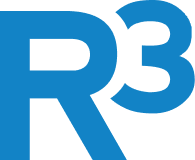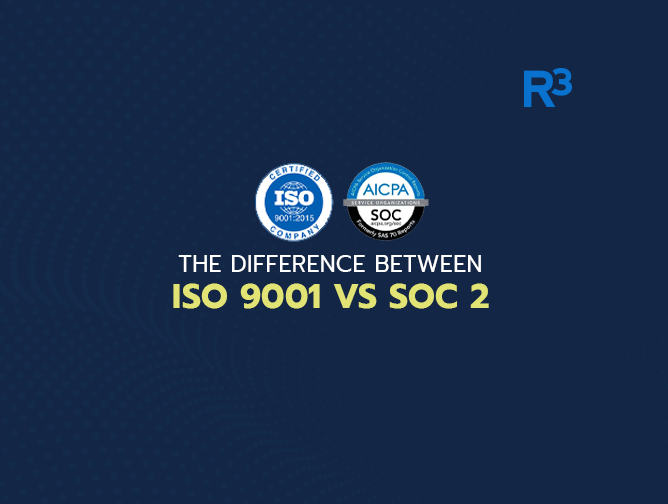ISO 9001 and SOC 2 are two different frameworks that organizations can use to improve their operations and demonstrate their commitment to quality and security. In this blog post, we will explore the differences between ISO 9001 and SOC 2 and highlight the benefits of each framework.
What is ISO 9001?
ISO 9001 is a quality management system (QMS) framework that organizations can use to ensure that they meet customer requirements and continually improve their operations. The framework is designed to help organizations of all sizes and industries improve their processes and ensure that they deliver high-quality products and services to their customers.
The ISO 9001 framework consists of several key elements, including:
- Leadership: The organization’s leaders must be committed to quality and continuously strive to improve the organization’s processes.
- Planning: The organization must establish objectives and develop plans to achieve those objectives.
- Support: The organization must provide the necessary resources, including personnel, infrastructure, and technology, to support the QMS.
- Operations: The organization must implement its plans and processes to deliver products and services that meet customer requirements.
- Performance evaluation: The organization must continually monitor its performance and evaluate its effectiveness in meeting its objectives.
- Improvement: The organization must identify areas for improvement and take corrective action to continually improve its processes.
What is SOC 2?
SOC 2 is a security and reliability framework that organizations can use to demonstrate their commitment to protecting the privacy and security of customer data. The framework was developed by the American Institute of Certified Public Accountants (AICPA) and is based on five trust service categories:
- Security: The organization must implement controls to protect against unauthorized access, use, or destruction of customer data.
- Availability: The organization must ensure that customer data is available when needed and that systems are reliable and resilient.
- Processing integrity: The organization must ensure that customer data is accurate, complete, and processed correctly.
- Confidentiality: The organization must protect the confidentiality of customer data.
- Privacy: The organization must protect the privacy of customer data and comply with applicable laws and regulations.
ISO 9001 vs. SOC 2: Key Differences
ISO 9001 and SOC 2 have several key differences that organizations should be aware of when choosing a framework to implement. Here are some of the key differences between the two frameworks:
- Focus: ISO 9001 is focused on quality management, while SOC 2 is focused on security and reliability.
- Audience: ISO 9001 is primarily intended for internal use by organizations, while SOC 2 is intended for use by external auditors and customers.
- Certification: ISO 9001 can be certified by third-party auditors, while SOC 2 can only be attested by a licensed CPA.
- Compliance: ISO 9001 compliance is voluntary, while SOC 2 compliance may be required by customers or regulatory agencies.
- Scope: ISO 9001 applies to all aspects of an organization’s operations, while SOC 2 only applies to the security and reliability of systems and processes that store or process customer data.
Benefits of ISO 9001
Implementing ISO 9001 can provide several benefits to organizations, including:
- Improved customer satisfaction: ISO 9001 helps organizations meet customer requirements and improve their overall customer satisfaction.
- Increased efficiency: ISO 9001 helps organizations identify areas for improvement and optimize their processes to increase efficiency and reduce waste.
- Improved employee morale: ISO 9001 provides a clear framework for employees to follow, which can improve their job satisfaction and morale.
- Competitive advantage: ISO 9001 certification can provide a competitive advantage by demonstrating an organization’s commitment to quality and customer satisfaction.
Benefits of SOC 2
Implementing SOC 2 can provide several benefits to organizations, including:
- Improved security and reliability: SOC 2 helps organizations implement controls to protect the privacy and security of customer data, which can increase customer trust and confidence.
- Compliance with regulatory requirements: SOC 2 compliance may be required by regulatory agencies or customers, depending on the industry.
- Competitive advantage: SOC 2 certification can provide a competitive advantage by demonstrating an organization’s commitment to security and reliability.
- Cost savings: SOC 2 compliance can help organizations avoid costly data breaches and reduce the risk of legal liability.
Which Companies Need ISO 9001 and SOC 2?
ISO 9001 is a versatile framework that can be applied to organizations of all sizes and industries. Any organization that wants to improve its operations and meet customer requirements can benefit from ISO 9001.
SOC 2 is more targeted and is primarily used by organizations that store or process customer data, such as technology companies, healthcare providers, and financial institutions. Any organization that wants to demonstrate its commitment to protecting customer data can benefit from SOC 2.
Elements of Achieving and Maintaining ISO 9001 and SOC 2
Achieving and maintaining ISO 9001 and SOC 2 certification requires a commitment to ongoing improvement and compliance. Here are some of the key elements of achieving and maintaining certification for both frameworks:
- Identify the scope: Determine which processes and systems will be covered by the certification and ensure that they meet the requirements of the framework.
- Develop policies and procedures: Develop policies and procedures to implement the requirements of the framework and ensure that they are communicated to employees.
- Implement controls: Implement controls to ensure compliance with the framework requirements and monitor their effectiveness.
- Conduct audits: Conduct regular internal audits to ensure ongoing compliance with the framework requirements.
- Maintain documentation: Maintain documentation of policies, procedures, controls, and audit results to demonstrate ongoing compliance.
How an IT MSP Can Help with ISO 9001 and SOC 2
Implementing and maintaining ISO 9001 and SOC 2 can be a complex and time-consuming process, especially for small and medium-sized businesses. An IT managed service provider (MSP) can provide valuable support and expertise to organizations seeking certification for either framework.
An MSP can help with the following:
- Gap analysis: Conduct a gap analysis to determine which areas of the organization’s operations need improvement to meet the requirements of the framework.
- Documentation development: Develop policies, procedures, and controls to implement the requirements of the framework and ensure that they are documented.
- Implementation support: Provide support and guidance during the implementation process to ensure that the organization meets the requirements of the framework.
- Training: Provide training to employees on the policies, procedures, and controls to ensure that they understand and follow them.
- Audit support: Provide support during external audits to ensure that the organization is prepared and has the necessary documentation to demonstrate compliance.
ISO 9001 and SOC 2 are two different frameworks that organizations can use to improve their operations and demonstrate their commitment to quality and security, respectively. While ISO 9001 focuses on quality management, SOC 2 focuses on security and reliability, and both frameworks can provide significant benefits to organizations. An IT MSP can provide valuable support and expertise to organizations seeking certification for either framework, and achieving and maintaining certification requires a commitment to ongoing improvement and compliance.


